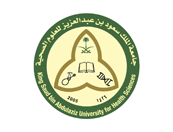Are Listening and Interpersonal Communication Skills Predictive of Professionalism in Undergraduate Occupational Therapy Students?
Abstract
Purpose: To investigate if self-report measures of listening and interpersonal communication skills in undergraduate occupational therapy students predict aspects of professionalism. Methods: Cross-sectional study of 135 third- and fourth-year students enrolled in the four-year Bachelor of Occupational Therapy (Honours) course at Monash University in Australia. Students completed the Active-Empathetic Listening Scale (AELS), the Listening Styles Profile-Revised (LSP-R) and the Interpersonal Communication Competence Scale (ICCS). The Penn State College of Medicine Professionalism Questionnaire (PSCOPQ) measured aspects of students' professionalism. The AELS, LSP-R, ICCS and PSCOPQ instruments have established validity and reported reliability. Regression analysis with bootstrapping examined the relationships between students' listening and interpersonal skills and professional attributes. Results: Significant associations were observed across several PSCOPQ professionalism domains: Sensing (AELS) (p = .029) and Self-Disclosure (ICCS) (p = .026) predicted Accountability (PSCOPQ); Task-Oriented (LSP) (p = .019) predicted Equity (PSCOPQ); and Expressiveness (ICCS) (p = .023) predicted Duty (PSCOPQ). Assertiveness (ICCS) (p = .048) and Self-Disclosure (ICCS) (p = .049) were weak predictors of Duty and Altruism (PSCOPQ), respectively. Conclusion: The findings demonstrate the significance of listening and interpersonal communication in developing aspects of professionalism in students and emphasise the important of providing opportunities within occupational therapy education curricula that facilitate and enhance students' learning and application of active listening and communication skills. This will better prepare students to successfully complete course programs, assist in the development of their professional self-identity and equip them with the necessary professional attributes as they transition into the workforce. © 2020 King Saud bin Abdulaziz University for Health Sciences
Recommended Citation
Brown, Ted; Yu, Mong-lin; and Etherington, Jamie
(2020)
"Are Listening and Interpersonal Communication Skills Predictive of Professionalism in Undergraduate Occupational Therapy Students?,"
Health Professions Education: Vol. 6:
Iss.
2, Article 15.
DOI: 10.1016/j.hpe.2020.01.001
Available at:
https://hpe.researchcommons.org/journal/vol6/iss2/15



